Delhi << DEHL ee >>, sometimes called Dilli, is an Indian union territory and the second largest city in India. Only Mumbai has more people. Delhi is designated as the National Capital Territory. It is made up of three main census areas—Old Delhi, New Delhi, and Delhi Cantonment, including more than 200 towns and villages in the surrounding countryside. The Delhi union territory has an area of 573 square miles (1,483 square kilometers) and a population of 16,787,941.
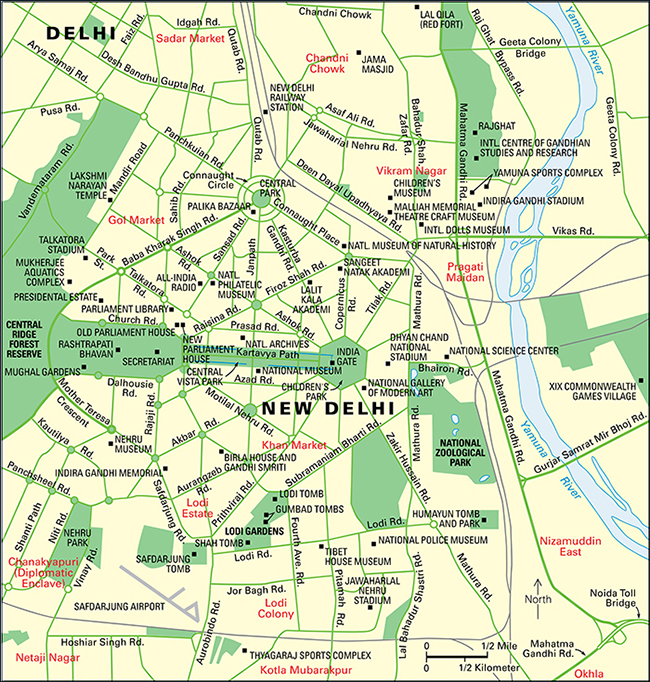
Old Delhi covers 360 square miles (932 square kilometers). New Delhi is the official capital of India. It covers 169 square miles (439 square kilometers).
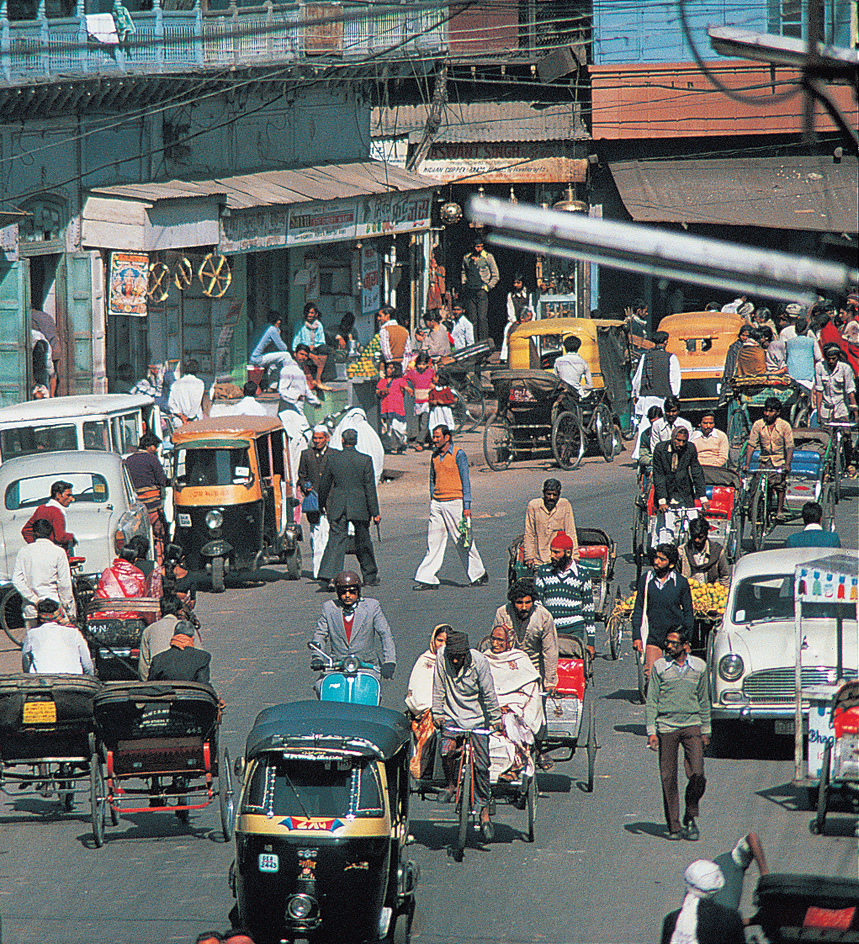
New Delhi was built by the British 3 miles (5 kilometers) south of Old Delhi in the early 1900’s. Old Delhi was India’s capital from 1912 until 1931, when New Delhi was established as the capital. The city of Old Delhi, officially known simply as Delhi, has a population of 11,034,555. The city of New Delhi has a population of 257,803.
Delhi lies on the Yamuna (or Jumna) River, a tributary of the Ganges (or Ganga), in north-central India. It is about 93 miles (150 kilometers) south of the Himalaya.
Because it includes the nation’s capital, Delhi is a union territory under the control of the central government, rather than a separate state. To the east lies the state of Uttar Pradesh, and to the north, west, and south, Delhi is surrounded by the state of Haryana.
The city
Delhi, including both Old and New Delhi, lies within a roughly three-sided area of land known as the Delhi Triangle, bounded on two sides by hills of the Aravalli range and on the third side by the Yamuna. The contrast between Old and New Delhi is striking.
Old Delhi
consists of a twisted maze of narrow winding streets cut through by a few broad roads. The central section of the city is within the ruins of walls that were built in the mid-1600’s. Five of Delhi’s original 14 gates are still standing.
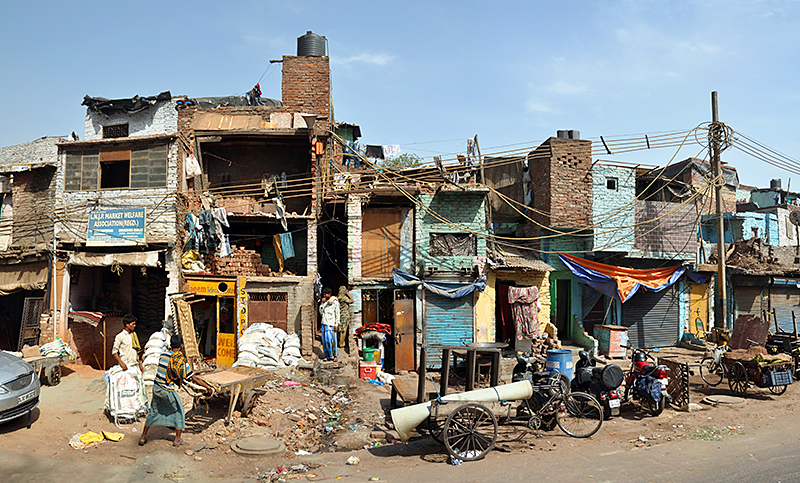
Living conditions in Old Delhi are overcrowded and cramped. Many of Delhi’s industries are in these heavily populated residential areas. The location of these industries is partly responsible for the city’s crowded living conditions. One of the busiest and most colorful streets in Delhi is Chandni Chowk, a name that means silver street. It is a wide boulevard measuring 69 feet (21 meters) across and lined with tiny shops, in which silversmiths and other craftworkers produce exquisite products. It is also packed with stalls and multicolored temples. It was laid out in 1650 on the orders of the Mughal princess, Jahan Ara.
New Delhi
was designed by the British architect Sir Edwin Lutyens, assisted by Sir Herbert Baker. It was laid out on a well-drained site standing slightly above the level of the surrounding plain. The builders used explosives to blast away the top layer of the land to flatten it and provide earth to fill in the nearby valleys. The resulting complex is a spacious, attractive, and carefully planned city, with broad, tree-lined avenues and many open areas, parks, gardens, and fountains.
Many of New Delhi’s best-known landmarks lie on a line running from east to west through the city. The line starts at the National Stadium. Then it passes through the Children’s Park and the India Gate along the impressive Kartavya Path (formerly called the Rajpath), through Central Vista Park, to Rashtrapati Bhavan (the residence of the president of India). A similar line running north-south, known as “Janpath,” goes from the main shopping center, Connaught Place, to residential suburbs. Several districts retain their own character. The Civil Lines, originally laid out to house British colonial officials, is now a residential area for well-off Indian government officials. A large industrial area, Okhla, is on Mathura Marg in the south. Kotla Mubarakpur has the appearance of a sprawling country village. Chanakyapuri is an area set aside for foreign embassies. The vast Jawaharlal Nehru Stadium, built for the 1982 Asian Games and named after India’s first prime minister, hosts many sporting events and concerts. Delhi also has India’s finest zoo, with rare white tigers. The Delhi metropolitan area has an extensive underground and elevated rail system.
Delhi contains what are probably the finest monuments in any city in India. The Qutab Minar, one of the city’s most famous sights, is a 5-story, 236-foot (72-meter) tower of red sandstone. It was begun in 1199 as a symbol of Muslim victory and power and used for hundreds of years by muezzins (mosque officials) calling the faithful to prayer. Near the Qutab is one of Delhi’s most remarkable sights, a simple iron pillar, set up about A.D. 400. It weighs over 7 tons (6 metric tons), stands more than 23 feet (7 meters) high and has never rusted. The citadel of Tughluqabad was a major center of power for about 10 years in the 1300’s and has been a wasteland of ruins ever since. In the beautiful Lodi Gardens is the cemetery of the Lodi kings, who ruled India from Delhi during the 1400’s and were overthrown by the Mughals in 1526.
Shah Jahan’s Lal Qila (Red Fort) was built between 1639 and 1648. Its walls of red sandstone enclose elegant halls and pavilions where the Mughal emperors held lavish ceremonies and gave audience to subjects and ambassadors. The majestic Jama Masjid is one of the biggest mosques in all India and was also built by Shah Jahan. It is built of marble and sandstone and has three marble domes.
Between Delhi and New Delhi is a shrine called the Rajghat. It marks the place where the body of the Indian leader Mohandas K. Gandhi was cremated in 1948.
The people.
More than half the inhabitants of Delhi are immigrants to the area. Four out of five residents are Hindus. Muslims are the largest minority, but there are also Jains, Christians, and Buddhists.
Education.
Delhi has three higher education complexes, the University of Delhi, the Jawaharlal Nehru University, and the Jamia Millia Islamia. All three are federal universities. Delhi is also home to the Sangeet Natak Akademi, for the performing arts; and the Lalit Kala Akademi, for painting, sculpture, architecture, and applied arts.
Arts and culture.
New Delhi is home to the National Museum and the National Gallery of Modern Art. There are also museums dedicated to Mohandas K. Gandhi, Jawaharlal Nehru, and Indira Gandhi, and to the Indian Air Force, rail transport, dolls, stamps, and Tibet.
Culture and the arts flourish due to the variety of the population and encouragement from the government. Indian dance, drama, and music remain popular, but young people in Delhi also enjoy going to the cinema to watch both Western films and the products of India’s thriving film industry.
Delhi is noted for the wide variety of its cooking. Mughlai court food consisted of rich meat and vegetable dishes in the Persian style, cooked in spices and rich cream. Visitors to Delhi can still enjoy such cooking. Other local specialities include marinated kebabs, chicken, mutton, or fish cooked slowly in a tandoor (clay oven), and chack, a refreshing drink made of thin yogurt flavored with ginger, cumin, coriander, and chillies. Southern Indian, Chinese, European, and Lebanese restaurants also flourish in the city.
Economy.
Government is the largest employer in Delhi, followed by industry, and then commerce. A large number of people work in the Indian Civil Service and Delhi’s local administration. Others work in law and other professions and a wide variety of service industries.
Delhi has long been famed for its luxury crafts—ivory carving, painting, and embroidery. This tradition of highly skilled work now also includes the manufacture of machine tools and precision instruments. Delhi also has India’s largest concentration of electronics factories. Companies in the city manufacture metal products, rubber, and radio and television parts. Plants in Delhi produce chemicals and fertilizers. Other major industries include the making of garments, leather goods, and sporting equipment. Railroads are the most valuable part of the city’s transportation industry.
Old-fashioned handicrafts still survive, supported in part by the tourist trade. Weavers, jewelers, and goldsmiths still work in Old Delhi. Craftworkers in wood, brass, and terra cotta display their skills at the city’s Crafts Museum.
Delhi’s geographical and political importance make it a major center of finance and commerce in India. Wholesale and distributive trades are among its chief activities. It has also become the focus of India’s banking system and insurance business.
Delhi suffers major problems that hamper its economy. One is a housing shortage, which results in about a third of the population being crammed into slums and illegal shanties. An irregular electrical power supply forces factories to close down production without warning. Hard-pressed water and sewerage services struggle to keep up with the requirements of the city.
Government.
Delhi is the National Capital Territory. Its local government is headed by a lieutenant governor appointed by the president of India. A chief minister leads the territory’s executive body, called the Council of Ministers. India’s president appoints the chief minister, who is usually the leader of the controlling party or coalition in Delhi’s Legislative Assembly. The chief minister selects the council members, and the president formally appoints them. The people of Delhi elect the members of their Legislative Assembly.
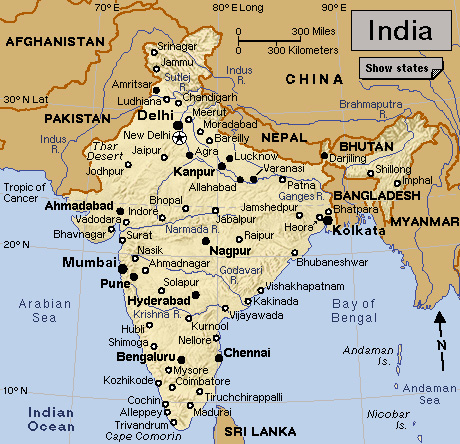
Delhi is the place from which the whole of India is governed. It has imposing government buildings. One of the most impressive buildings is the huge Rashtrapati Bhavan (Presidential House). Designed by Lutyens as a home for the viceroy of India, it is now the official residence of the president of India. Nearby stands the Sansad Bhavan (Parliament House), designed by Sir Herbert Baker. Its three semicircular halls were originally intended to house the Chamber of Princes, Council of State, and Legislative Assembly. Until 2023, Parliament House was home to Parliament’s upper house, Rajya Sabha (Council of the States), and the lower house, Lok Sabha (House of the People). A new Parliament building, constructed nearby, was completed in 2023 and is now home to the two houses of India’s Parliament.
Transportation and communication.
All land routes from northwest India to the eastern plain pass through the Delhi area. This makes it the hub of the country’s transport system, where five national highways and several railway lines converge. Indira Gandhi International Airport, to the southwest of the main city, is a stopover in the international airway system. The airport has boosted the city’s tourist trade.
Many of India’s leading newspapers have their head offices in Delhi. They include The Times of India, The Hindustan Times, and The Indian Express. All-India Radio, the state radio service, has studios in Delhi. Many of the state-run television programs also originate from the Indian capital.
History
There is a reference to a settlement called Indraprastha in the great epic poem Mahabharata. Archaeologists believe that this settlement was located in the Delhi area at the village of Indapat. Excavations in the Old Fort have revealed that a settlement existed there before 2000 B.C. and that people lived there continuously until about A.D. 1000. In the 1100’s, Prithviraja III of the Chauhan dynasty made Delhi his capital, only to be displaced by the Muslim conqueror Qutb-ud-Din Aibak. The city was the first of at least seven to be built in the Delhi Triangle.
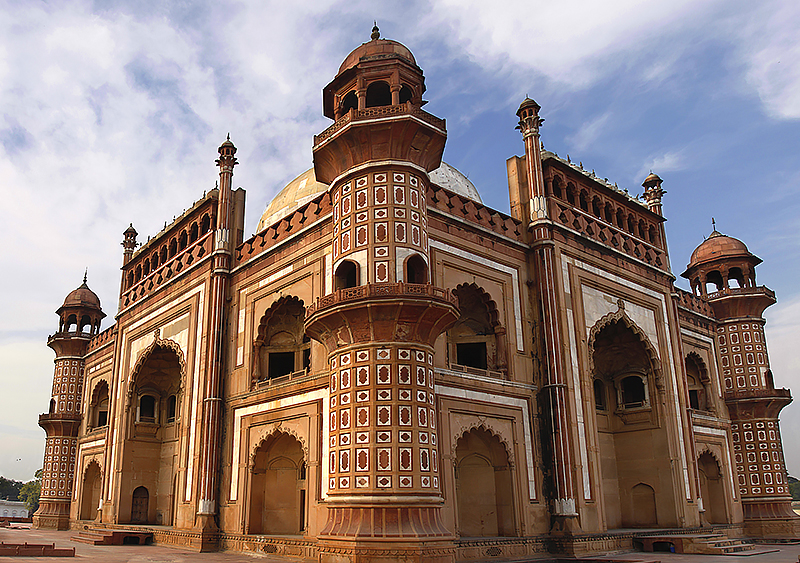
Successive Turkish and Afghan dynasties built cities on different sites in the Delhi area between 1193 and 1354. The devastating invasion of Tamerlane between 1389 and 1398 caused the capital to be shifted to Agra. But Babur, founder of the Mughal dynasty and empire, moved the capital back to Delhi in 1526. His son, Humayun, built another city, which was destroyed in 1540 by the invader Sher Shah.
The Mughal emperor Akbar kept court at Fatehpur Sikri. His successor, Jahangir, was based in Agra. But in 1638, Shah Jahan began the building of the seventh city—Shahjahanabad—now known as Old Delhi. The city once more became the capital. Later, as Mughal power weakened, Delhi was repeatedly raided and robbed of its treasures. The most terrible attack was the invasion of the Persian Nadir Shah in 1739. The British took possession of the city in 1803 but did not immediately make it their capital. Calcutta (now Kolkata), the gateway to the earliest British conquests, remained the capital of British India.
During the Indian Revolt of 1857, Indian soldiers held Delhi for five months. The British recapture of the city involved fierce fighting and much destruction. In 1877, the British authorities announced at Delhi the proclamation of Queen Victoria as empress of India.
In 1911, Delhi was the setting for a glittering spectacle called a durbar, or royal gathering, at which the 562 princes of India met to pay their respects to George V, the only king-emperor ever to visit the country. The royal visitor chose the occasion to announce that the capital was to move from Calcutta to Delhi. The formal move took place in 1912. In the same year, work began on planning and building New Delhi to house the new seat of government.
New Delhi was intended to be the British imperial equivalent of Rome—imposing, and capable of expanding to something even greater. About 30,000 laborers were needed just to put up the official buildings and plant 10,000 trees. When India became independent in 1947, New Delhi became its capital.
Great industrial growth took place in Delhi after India gained independence from Britain. The city’s population also began to increase greatly, in part from the arrival of thousands of Indian refugees from the newly independent nation of Pakistan nearby.
Delhi’s population is about 10 times larger than it was in 1951. Government efforts to manage the city’s growth have included developing new residential and industrial areas. Delhi still faces many problems caused by its rapid growth and dense population.
See also India; New Delhi.
